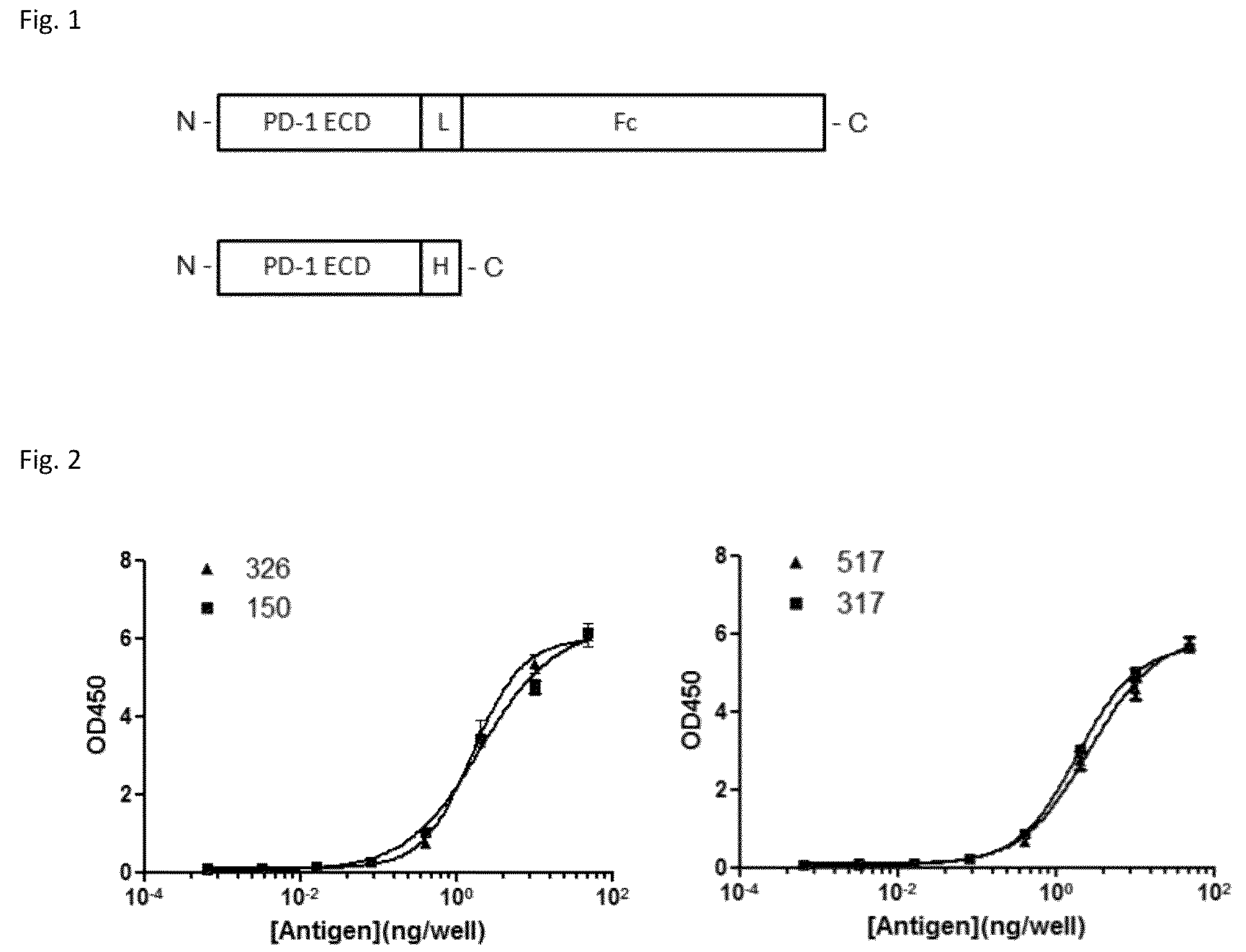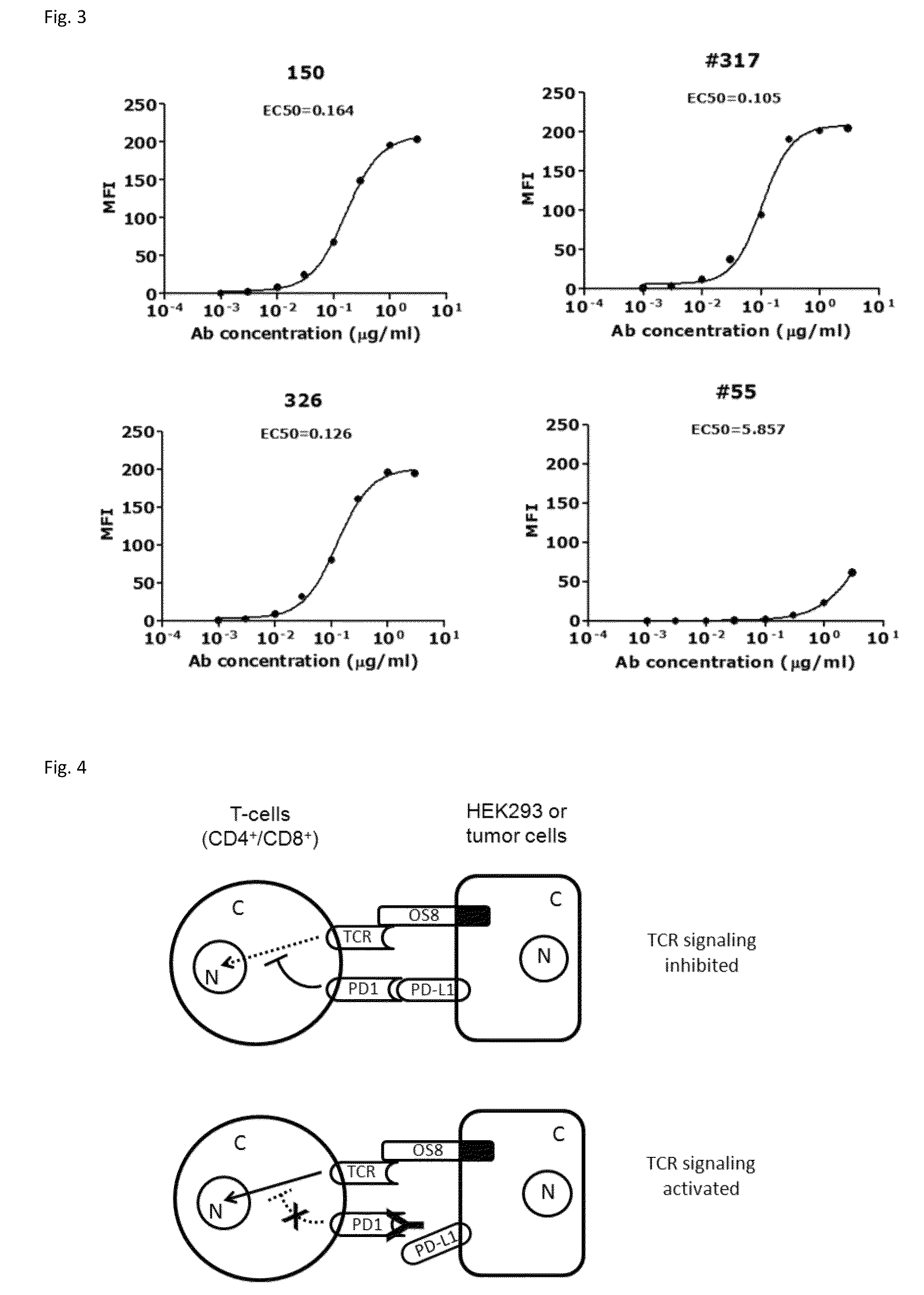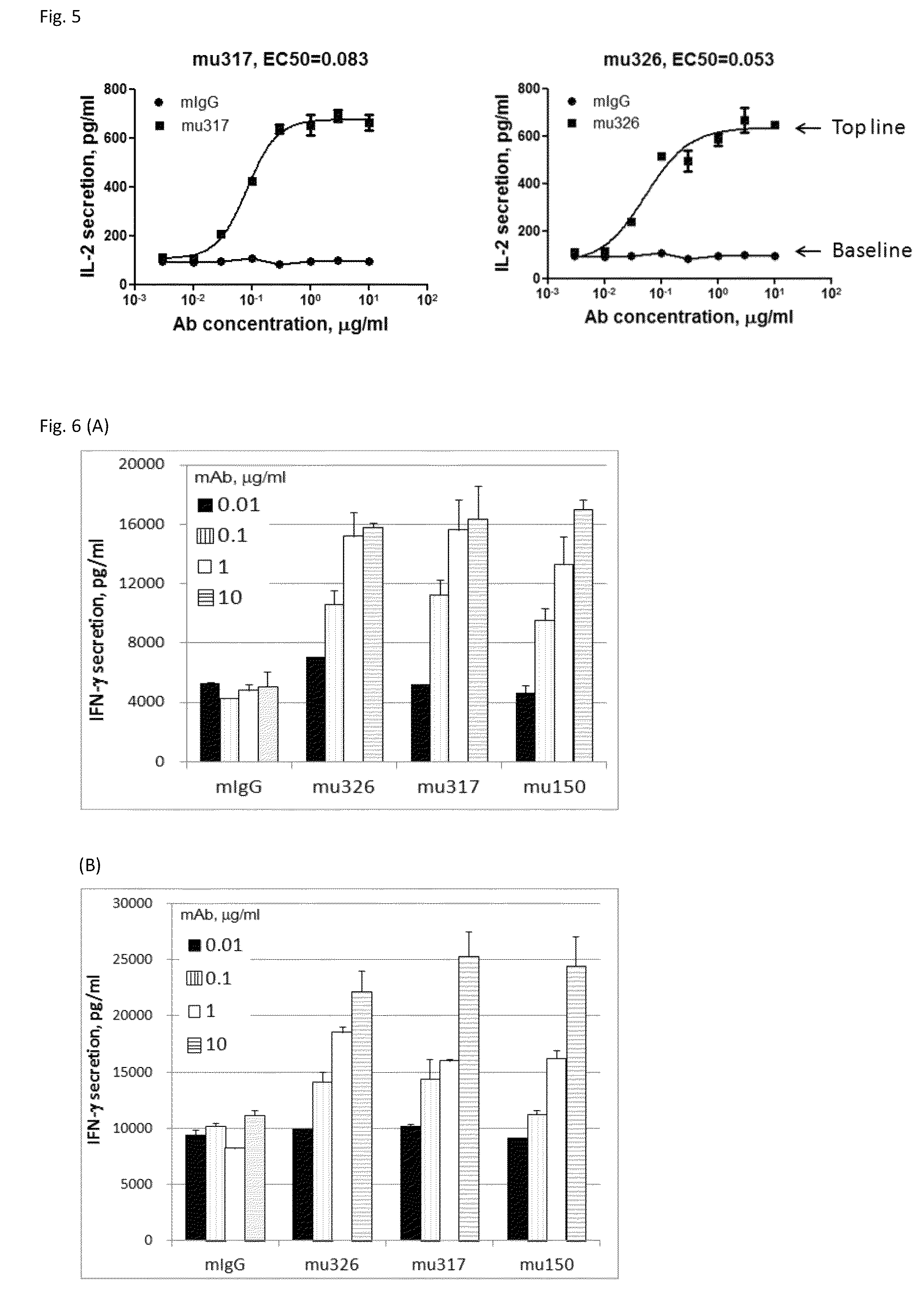Anti-PD1 antibodies and their use as therapeutics and diagnostics
a technology of anti-pd1 antibodies and diagnostics, applied in the field of anti-pd1 antibodies and their use as therapeutics and diagnostics, can solve the problems of poor prognosis of patient survival outcom
- Summary
- Abstract
- Description
- Claims
- Application Information
AI Technical Summary
Benefits of technology
Problems solved by technology
Method used
Image
Examples
example 1
Generation of Anti-PD-1 Monoclonal Antibody
[0128]Anti-PD-1 monoclonal antibodies (mAbs) were generated based on conventional hybridoma fusion technology (Kohler and Milstein 1976 Eur J Immunol 6:511-519; de St Groth and Sheidegger 1980, J Immunol Methods 35:1-21; Mechetner 2007 Methods Mol Biol 378:1-13) with minor modifications. MAbs with high binding activities in enzyme-linked immunosorbent assay (ELISA) and fluorescence-activated cell sorting (FACS) assay were selected for further characterization
[0129]PD-1 Recombinant Protein for Immunization and Binding Assays
[0130]Expression plasmid containing full-length human PD-1 cDNA was obtained from Origene (Cat. No. SC117011, NCBI Accession No: NM—005018.1, Beijing, China). The extracellular domain consisting of amino acid (AA) 1-168 of PD-1 (SEQ N0.1, SEQ N0.2) was PCR-amplified, and subcloned in pcDNA3.1-based expression vector (Invitrogen, Carlsbad, Calif., USA) with C-terminus fused either to a His6 tag or to the γFc domain of huma...
example 2
Comparison of Binding Activities Among Anti-PD-1 Antibodies
[0143]Through screening thousands of hybridomal clones we identified some top monoclonal antibodies (mAb), which bind to human PD-1 with high specificity and strength. As shown in ELISA assay (FIG. 2), three of the top antibodies elicited such binding strength and specificity. FACS analysis results demonstrated the selected monoclonal antibodies bind to the native PD-1 proteins expressed on cell surface. Murine mAb317 (mu317), mu326 and mu150 showed concentration-dependent binding activity, and their binding EC50 (Effective concentration at 50% activity) was significantly lower than that of the control mu55 (FIG. 3).
[0144]Assess mAb Binding Affinity by Surface Plasmon Resonance (SPR)
[0145]The mAbs with high binding activities in ELISA and FACS, as well as with potent functional activities in the cell-based assays (herein) were examined for their binding kinetic constant in real time binding reactions. Murine anti-PD-1 mAbs w...
example 3
Functional Activity of Anti-PD-1 Antibodies in Human T Cells
[0153]Generation of Stable Cell Lines
[0154]Retroviral packaging cell line PT67, human T cell lines HuT78 and HEK293 were obtained from the American Type Culture Collection (ATCC, Rockville, Md.). A HuT78 subline HuT78 / PD-1 that expresses PD-1 was generated by retroviral transduction using pFB-neo vector (Strategene / Agilent Tech, Santa Clara, Calif.) containing the PD-1 gene, according to the protocol described previously (Zhang et al. 2005 Blood 106: 1544-1551). The T cell engager, a membrane-anchored chimeric Ab (OS8), was constructed by fusing the single chain variable fragment (scFv) of an anti-human CD3 mAb OKT3 (Kipriyanov et al. 1997, PEDS 10:445-453) to the C-terminal domain (113-220) of mouse CD8α (NCBI Accession No: NP—001074579.1) which includes hinge, transmembrane and cytoplasmic domains. By doing so, anti-CD3 scFv is anchored to cell surface as a T cell activator. Human PD-L1, PD-L2 and OS8 cDNAs were sub-clone...
PUM
| Property | Measurement | Unit |
|---|---|---|
| Fraction | aaaaa | aaaaa |
| Fraction | aaaaa | aaaaa |
Abstract
Description
Claims
Application Information
 Login to View More
Login to View More - R&D
- Intellectual Property
- Life Sciences
- Materials
- Tech Scout
- Unparalleled Data Quality
- Higher Quality Content
- 60% Fewer Hallucinations
Browse by: Latest US Patents, China's latest patents, Technical Efficacy Thesaurus, Application Domain, Technology Topic, Popular Technical Reports.
© 2025 PatSnap. All rights reserved.Legal|Privacy policy|Modern Slavery Act Transparency Statement|Sitemap|About US| Contact US: help@patsnap.com



